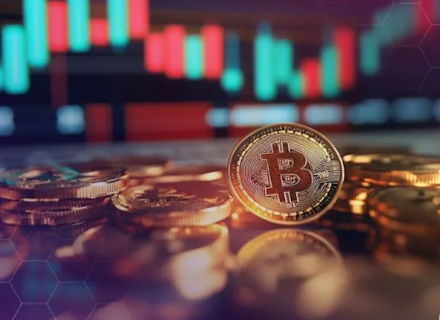Comparison of Solana and Ethereum Ecosystems: Daily Active Users, Application Scenarios, Revenue, and Fees
Ethereum may dominate institutional-level complex financial scenarios, while Solana has a greater advantage in pure consumer-level scenarios.
Author: E2M Research
Network Data Comparison
From the perspective of active user data, the Ethereum ecosystem shows that the daily active users on the mainnet are basically maintained at around 400,000 to 500,000.

Looking at Layer 2, Base occupies the vast majority, with about 1.5 million daily active users. Immutable has about 300,000, Arbitrum around 260,000, and OP about 90,000. All data combined with the mainnet totals less than 3 million daily active users.

For Solana, the data has seen significant growth starting in 2024, typically finding its "bowling lane," showing an S-shaped growth. Currently, daily active users are maintained at around 5 million.

From the daily active user data, Solana has already surpassed the Ethereum ecosystem, with 5 million compared to 3 million.
This is different from the previous round of BSC data prosperity, where BSC's data boom still relied on Ethereum's EVM architecture, essentially influenced by Ethereum's architecture, which did not significantly affect Ethereum's status. However, Solana uses a completely different architecture, similar to Chimpanzee Company, hoping to establish its own standards. If a large number of users enter the Solana ecosystem, it will drive projects to migrate to the Solana ecosystem.
Recently, projects like PENGU launching tokens on Solana, DePin projects, and AI Agents are more inclined to issue assets on Solana, and the issuance of assets will drive up DEX trading volume. This can be referenced by comparing mainstream DEX data:

There are slight differences in this data across several statistical platforms, but it does not affect the analysis. Taking defillama as an example, we can see that the trading volume of the Ethereum ecosystem and Solana ecosystem is basically at an equal level.
In terms of fees, Solana has an advantage, mainly because meme trading users are less sensitive to high fees.
Project Revenue Data
The following is a ranking of recent 24-hour revenue data for projects. It can be seen that apart from stablecoins Tether and Circle, the rest are mainly from the Solana ecosystem. This data can be seen as an expensive signal, representing users' willingness to pay for products. It is clear that projects in the Solana ecosystem are significantly more popular.
Another point worth noting is that the revenue of the public chains themselves is not the highest. For example, Solana, Ethereum, and Tron all have lower revenues than mainstream applications on the chain. This relates to the debate about fat protocols versus fat applications, but currently, it seems that applications capture value more effectively.
The reason may lie in the fact that applications on each chain are basically monopolized by a few, and if the ecosystem develops to a larger scale, this phenomenon should weaken.

Fidelity's Report
The Fidelity Digital Currency 2025 Outlook Report also compares Ethereum and Solana.
The article points out: The Rollup-Centric roadmap aims to scale Ethereum while maintaining the usability of Layer 1 blockchains. Although the fees on Layer 1 have significantly decreased after the Deneb-Cancun upgrade, the team still believes that while the revenue from the Blob market may not compensate for the revenue decline caused by the upgrade in the short term, this change will bring positive network effects in the long run.
The relationship between Layer 2 and Ethereum is mutually beneficial, as Layer 2 benefits from Ethereum by providing low-cost transaction execution and further expanding ETH.
The following chart shows the trend of the number of Blobs and Blob fees.
Blob fees are seen as a long-term positive driver of Ethereum's network effects, especially helping Layer 2 attract more users to interact with ETH. This does not mean that Ethereum has completely abandoned future cash flows. Developers indicate that the most likely ultimate goal is that as network effects grow significantly, cash flows will naturally form.

Ethereum core developers point out that low fees are a key factor driving user growth in Layer 2. It is expected that by 2025, more Layer 2 solutions focused on specific use cases will emerge. Although Solana seems to have an advantage in the short term, Ethereum's foundational strength may be more solid in the long term.
Ethereum tokens are expected to remain stable after the Deneb-Cancun upgrade, with an estimated annual inflation rate of 0.22% in 2024. Ethereum's scaling plan aims to gradually increase the number of blobs, and more blobs combined with Layer 2 user demand may prompt Ethereum's total fees to exceed the annual ETH issuance.
The following chart shows the fees and transaction volume of L1. The data shows that although more transactions are conducted on L2, the transaction volume on L1 has not decreased compared to before the upgrade, even though L1 transaction fees have significantly decreased. This indicates that even though Ethereum prioritizes L2 improvements, a large number of users still choose to use L1 for transactions.

Thoughts
The above considerations are based on the situation of 5 million daily active users. What needs to be considered is who has a better chance if daily active users reach 50 million or 500 million?
Given the different characteristics of the two, at the scale of 500 million daily active users, the two ecosystems may present a "cooperative division of labor" situation:
Solana is more likely to become the main carrier for consumer-grade applications, especially in high-frequency, low-value transaction scenarios such as gaming, social networking, and payments.
Ethereum (and its L2 ecosystem) may dominate institutional-level services and complex financial applications in high-value transaction scenarios.
Overall, Solana may have a greater advantage in pure consumer-grade scenarios due to its Web2-like user experience and high-performance characteristics.
However, considering the long-term health and security of the ecosystem, the Ethereum ecosystem, with its modular architecture and mature infrastructure, has stronger sustainability in supporting large-scale adoption. The ideal development path may be for the two ecosystems to develop together in their respective advantageous areas, jointly promoting the large-scale adoption of Web3. Of course, if the market grows 100 times, ETH's value capture should be less than 100 times, with a significant amount of value captured by layer 2 and upper-layer applications.
Views of Solana's Founder

Although Ethereum has fewer users than Solana, for example, Apple phones have a low market share but generate the highest profits. Is Ethereum in a similar situation?
Currently, this is not the case. The previous analysis shows that Ethereum actually captures very little value on layer 2, while applications on the chain capture a large amount of value. From a long-term perspective, in a market of 500 million users, Ethereum may dominate institutional-level services and complex financial applications in high-value transaction scenarios. This situation is similar to Apple's business model, where a small number of high-value transactions can generate greater economic value. As the Layer 2 ecosystem matures, Ethereum will further expand its competitiveness across various value levels. The revenue of public chains resembles paying for space or bytes rather than paying for asset value, leading to lower profitability. Upper-layer applications have more flexible charging methods, capturing higher value. However, through Ethereum's scaling approach, if a prosperous Layer 2 ecosystem emerges in the future, it may reverse the issue of low value capture.
Referring to Chimpanzee Games, Solana is more like Chimpanzee Company, which needs to find its niche market. Currently, it appears to be the meme issuance trading market, hoping to see Chimpanzees make mistakes or open up new markets in the midst of a tornado, such as AI agents. Investment in it will only be considered when Chimpanzee Company has a chance to become Chimpanzee Company in a new tornado. (Even if Solana succeeds, the value may not necessarily be captured by SOL.) The meme coin market is not a proprietary architecture market with high migration costs.
With the development of wallets, support for multiple chains means that the meme market does not strongly depend on the underlying public chain architecture. Ethereum has established a foothold in the DeFi industry, which is Ethereum's bowling lane, where the migration costs in the DeFi industry are high, giving Ethereum an advantage. The stablecoin industry has high conversion costs, but its architecture is unrelated to specific public chains. Bitcoin has high conversion costs and is a non-proprietary architecture. This indicates that the standards of the blockchain industry cannot simply replicate the model of Chimpanzee Games. Consensus seems to be a more important link, with strong network effects.
Solana has already become an indispensable part of the blockchain, with almost all mainstream cross-chain bridges and multi-chain wallets prioritizing EVM and Solana chains. The blockchain is an open system, which may not be like the closed ecosystems of every application on the internet; value networks can be interchangeable.
Users do not necessarily have to be limited to one ecosystem; they can trade memes on Solana and engage in DeFi on Ethereum. Full-chain wallets or chain abstraction may become new points of contention, as full-chain wallets are the applications closest to users, revolving around user key management solutions, user data identity systems, and the social relationship networks that arise from them, which may serve as the moat for wallets.
cm: In this round, SOL is a worthy investment target, very similar to the previous round of Ethereum, needing SOL to participate in this round of the meme market. Solana has not considered the importance of decentralization; without decentralization, Solana has advantages in the impossible triangle. In the long run, both have their own advantageous markets, but Ethereum's irreplaceability is stronger. The next Solana may emerge, but the next Ethereum is difficult.
dz: Bitcoin has no competitors as a value reserve market. Ethereum does not require permission for the global financial market and serves as the underlying support for Layer 2. Currently, Solana is still a meme casino with low irreplaceability.
Disclaimer: The content of this article solely reflects the author's opinion and does not represent the platform in any capacity. This article is not intended to serve as a reference for making investment decisions.
You may also like
Mars Morning News | SEC Expected to Issue "Innovation Exemptions" for the Crypto Industry in "About a Month"
The SEC is expected to issue an innovation exemption for the crypto industry. The UK "Digital Assets and Other Property Act" has come into effect. BlackRock's CEO revealed that sovereign wealth funds are buying bitcoin. Bank of America recommends clients allocate to crypto assets. Bitcoin selling pressure is nearing its end. Summary generated by Mars AI. The accuracy and completeness of this summary are still being improved as the Mars AI model continues to iterate.

a16z: Inefficient governance and dormant tokens pose a more severe quantum threat to BTC.
Deep Reflection: I Wasted Eight Years in the Crypto Industry
In recent days, an article titled "I Wasted Eight Years in the Crypto Industry" has garnered over a million views and widespread resonance on Twitter, directly addressing the gambling nature and nihilistic tendencies of cryptocurrencies. ChainCatcher now translates this article for further discussion and exchange.

